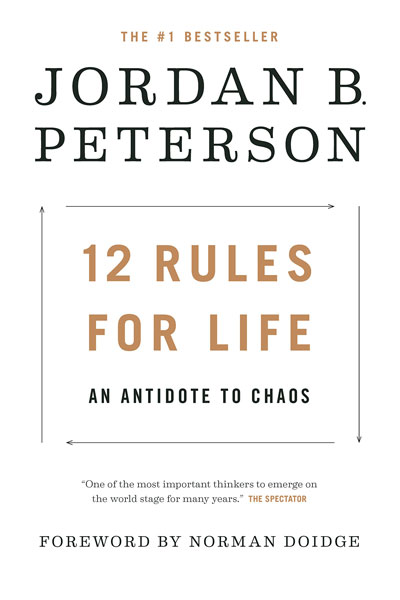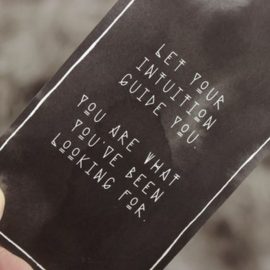

This article is an excerpt from the Shortform summary of "12 Rules for Life" by Jordan Peterson. Shortform has the world's best summaries of books you should be reading.
Like this article? Sign up for a free trial here .
What’s Jordan Peterson’s 12 Rules for Life about? What is the key message to take away from the book?
In 12 Rules for Life, Peterson argues that there’s a right and wrong way to conduct your life. He rejects the ambiguity of moral relativism—the idea that good and evil are subjective opinions and that every belief has its own truth. Moral relativism tolerates all ideas to avoid being “judgmental” and prevents adults from telling young people how to live. It also rejects thousands of years of development of virtue and how to live properly.
Keep reading for the key tenets and takeaways from Jordan Peterson’s 12 Rules for Life.
Jordan Peterson’s 12 Rules for Life
Most humans crave order and meaning in their existence, to deal with the terrifying uncertainty of the world. For much of history, this function was served by religion, with rules handed down by gods and supernatural surveillance of behavior. Despite differences in beliefs, all major religions drew on common themes, and the need for rules and order was universal. The ubiquity of this suggests something biological or evolutionary.
Jordan Peterson’s 12 Rules for Life asserts that the developed world is moving to greater secularism as a result of scientific explanations of the world’s uncertainty; critical thinking around religion and the logical impracticality of all religions being true at once; and moral relativism.
But take away religion, and a void remains. There is no scientific code of ethics that inherited the stabilizing role of religion. In the absence of clear rules and a moral compass, people are prone to nihilism, existential angst, and misery.
In this vacuum of guidance on how to live, many are drawn to group-centered beliefs (like political or national allegiance) or ideologies instead, because it gives them identity, purpose, and a shared code of conduct. It simplifies the world.
- For decades Peterson was bewildered by the question of the Cold War—how could people risk world destruction for their belief systems? He questioned both the fervor of Americans and Communists.
- He concluded that people adopt shared beliefs to avoid the negative emotions spurred by chaos. People are willing to fight to protect something that saves them from the existential terror of nihilism.
As a solution, Peterson focuses on individual responsibility. The central tenets are:
- Take responsibility for your own life. Don’t worry about other problems—fix your own first. If everyone did this, many society-level problems would be solved.
- Walk the line between order and chaos, where life is stable enough but also unpredictable enough to provoke personal growth. In other words, push yourself to the limit of your ability and challenge yourself.
- Acknowledge that life is suffering. Your goal is to make progress to avoid suffering.
- Overprotective adults avoid discussing suffering with their children, with the hope that it will protect them from it. This just makes children unprepared to deal with suffering when they run into it.
- If we lived properly as the above, we would be resistant to the pains of existence and to the enticing lures of empty ideologies promising safety.
That this book has hit such a chord supports the first point—that most people crave order and structure. The rest of the book clarifies the 12 Rules for Life, with themes of individual responsibility, being truthful to yourself, and defining your own meaning for life.
Should You Read This Book?
Jordan Peterson has attracted criticism for his remarks about political correctness and free speech. He also has attracted a politically conservative following. Much of this isn’t relevant to benefiting from 12 Rules for Life or from our book summary. If you come in skeptical because of his background, we suggest you keep an open mind, since the book’s advice can be genuinely useful to a broad range of people.
We found the book’s chapters inconsistent in quality. Some were clear, well-structured, and had forceful logic. Others were confusing meanderings into philosophy and allegories, reading like wandering streams of consciousness. In this summary, we try to structure the advice in a straightforward way. We reorganize sections from different chapters to fit the same theme.
This means we leave out tangents you might find useful. So as always, if you like the summary, we suggest you read the actual book.
Jordan Peterson is Christian, and he refers to the Bible throughout, but this isn’t a religious book. Instead, he argues that because similar tenets underlie a broad range of religions (Christianity, Buddhism, etc.), our human struggles are universal.
However, 12 Rules for Life is based on faith, by which I mean it doesn’t rely so much on data as it does on principles that make intuitive sense. The book doesn’t use randomized controlled trials to prove that “not lying to yourself is a good way to improve your life.” But given the complexities in life, not everything can be proven, and often you just have to act according to what you intuit is best. Thus acting out the 12 Rules for Life requires a bit of faith.
———End of Preview———

Like what you just read? Read the rest of the world's best summary of "12 Rules for Life" at Shortform . Learn the book's critical concepts in 20 minutes or less .
Here's what you'll find in our full 12 Rules for Life summary :
- Why standing up straight will make people treat you differently
- How to find meaning in your life and work
- Why you're lying to yourself without realizing it






